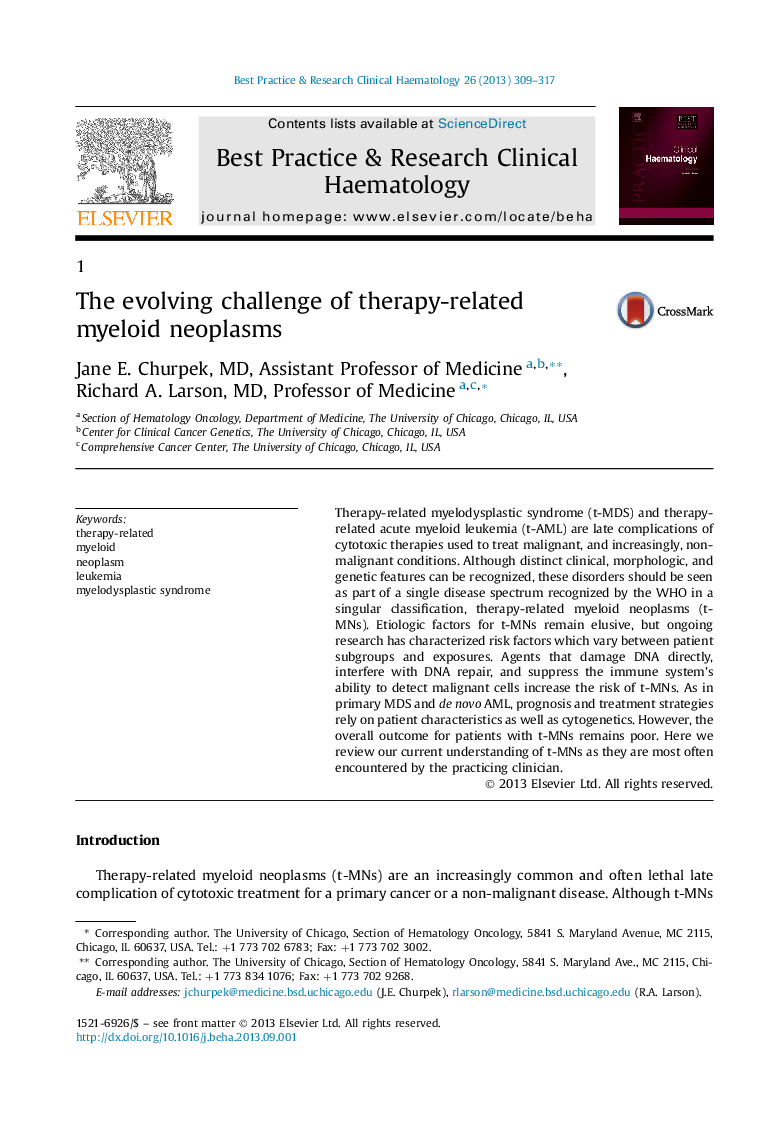| Article ID | Journal | Published Year | Pages | File Type |
|---|---|---|---|---|
| 2100121 | Best Practice & Research Clinical Haematology | 2013 | 9 Pages |
Therapy-related myelodysplastic syndrome (t-MDS) and therapy-related acute myeloid leukemia (t-AML) are late complications of cytotoxic therapies used to treat malignant, and increasingly, non-malignant conditions. Although distinct clinical, morphologic, and genetic features can be recognized, these disorders should be seen as part of a single disease spectrum recognized by the WHO in a singular classification, therapy-related myeloid neoplasms (t-MNs). Etiologic factors for t-MNs remain elusive, but ongoing research has characterized risk factors which vary between patient subgroups and exposures. Agents that damage DNA directly, interfere with DNA repair, and suppress the immune system's ability to detect malignant cells increase the risk of t-MNs. As in primary MDS and de novo AML, prognosis and treatment strategies rely on patient characteristics as well as cytogenetics. However, the overall outcome for patients with t-MNs remains poor. Here we review our current understanding of t-MNs as they are most often encountered by the practicing clinician.
